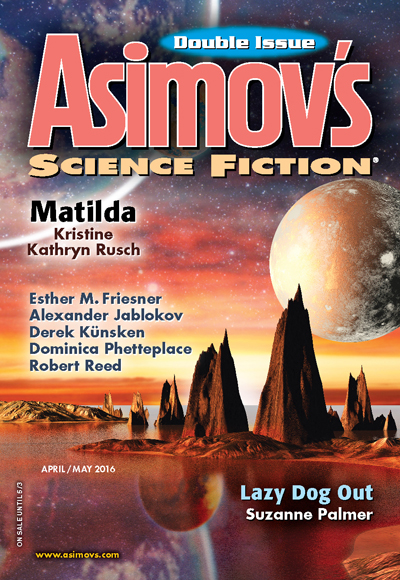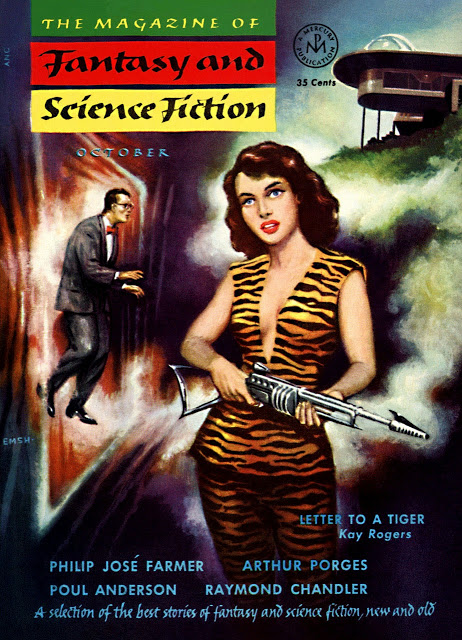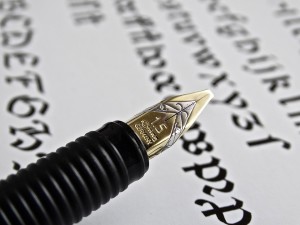
The standard advice to short fiction writers on submitting their work is to follow these steps:
- Write the very best story you can.
- Seek meaningful and educated feedback on the story.
- Do your final revisions.
- Familiarize yourself with the markets.
- Identify a hierarchy of markets that are appropriate for the story from most desirable to second most etc. (this might be based on pay rate or circulation, but it could also be based on how often stories in the venue are up for awards or who else appears in it–money isn’t everything).
- Correctly format the story according to the market’s directions, and then send it.
- Work on your next story while waiting to hear about the first one
That’s good advice and generally I’d recommend it.
However, what if you are prolific? I often think of a story that I’d heard about Robert Silverberg: When he grew serious about writing as a young man, he wrote a million words a year for a few years. That’s over 3,000 words a day without missing any days! He had more markets to look at (although not that many more than what we have now), and he was writing fast enough to fill each of the top magazine’s entire table of contents every month. Clearly the magazines wouldn’t make an all-Robert-Silverberg issue, so Bob wrote under pseudonyms. Even doing that, though, he was writing faster than the top markets could absorb his work. In 1958, he published 80 short stories! That’s not just a good year; for many authors it would be an entire career.
If you want to have your mind blown, check out Robert Silverberg’s summary bibliography.
How did Bob do that? He submitted work to a lot of places. I don’t know this for sure, because I haven’t asked him, but I’ll bet that in 1958 he submitted more stories than were accepted for publication. Yes, even Robert Silverberg saw rejection notes. Also, I’ll bet that because he was writing so fast, when he looked at his hierarchy of markets, he could not submit every story to his top market because he already had a story under consideration there. He had stories under consideration at his top twenty markets or more. Because he was prolific, he could not wait for the top markets to open; he submitted stories everywhere.
Submitting stories everywhere is a different submission philosophy, but if you are prolific, I think it is a good one.
My other example of submitting everywhere is the late Jay Lake who was also hugely prolific. The year before he won the John W. Campbell Award for Best New Writer, he was reporting a couple short story sales a week.
I bring these examples up to explain my current submitting philosophy, which I’ve come to think of as the shrapnel grenade school of submitting short fiction. Right now, I have twenty-one manuscripts in the mail. A month ago, I had thirty-two. I also have thirteen stories at home waiting for more revision or for the right market to open. (The opposite philosophy I think of as the cruise missile school of submitting, which has been perfected by Ted Chiang.)
The shrapnel grenade philosophy has a few advantages:
- Being prolific means that I’m practicing a lot. Finishing several short stories a month makes my learning and growth curve steeper than if I was writing slower.
- Submitting often makes me familiar with the market. Right now I have a good overview of who is editing where and what they are looking for. I’m particularly interested when new markets appear or anthologies open.
- Submitting a short story is the moment when an author briefly interacts with the larger world of editors and publishers. Submitting often means that there are more of those interactions. The editors are more likely to remember me when my newest story crosses their desk.
- I feel more professional when I produce stories and submit them at a regular interval. I feel less like a hobbyist. This is not a dig on writers who are not prolific. It is only a comment on how I feel. Everyone’s path up the mountain is their own.
So, for right now, I’m trying out many markets. This means that I’m following a piece of advice Dean Wesley Smith gave me a bunch of years ago, which was to “Pump the editors.” I know, I thought that was an oddly phrased sentence too, but what he meant was to write a bunch and keep your work circulating. The editors will eventually figure out that you are for real and serious about what you are doing.
And that’s a good thing.
P.S. I forgot to add where I’m finding all these markets. I lean heavily on ralan.com (every writer who uses his site ought to send him a donation), and the Submission Grinder. I also learn about market via networking with writers and editors I’ve come to know over time.
 The latest Asimov’s is out with my short story, “Three Paintings.” The main character is an artist who has come up with an unusual experiment in creativity.
The latest Asimov’s is out with my short story, “Three Paintings.” The main character is an artist who has come up with an unusual experiment in creativity.
 You know how sports fans will sit around the table and argue about today’s teams vs. the teams of the past? How would the 1985 Chicago Bears who went 15-1 do against the Superbowl champion 2015 New England Patriots, for example? This is an evergreen topic, and I think it’s an interesting one for the modern science fiction/fantasy writer.
You know how sports fans will sit around the table and argue about today’s teams vs. the teams of the past? How would the 1985 Chicago Bears who went 15-1 do against the Superbowl champion 2015 New England Patriots, for example? This is an evergreen topic, and I think it’s an interesting one for the modern science fiction/fantasy writer.
